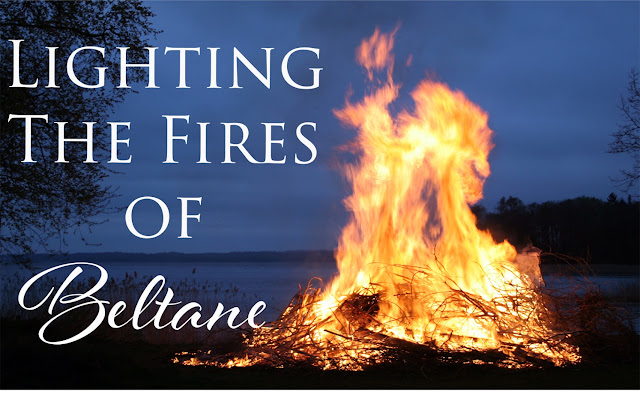Bonfires for Beltane
Photo credit: wyldwitchery.com
Pastor’s Epistle—April, A.D. 2018 B
Holy Week has come and gone, but Easter’s here to stay. Indeed, the Easter season
lasts a full 50 days, culminating in Pentecost come late May. And so for the
next seven weeks, our Paschal candle will continue to burn brightly, heralding
the Lord’s Resurrection, and our vestments and paraments will remain
white-and-gold as befits our high holy days.
No
matter how early or late the date of Easter falls on our Western calendar, one
holiday that is always part of the greater Easter season is Beltane, also known
as May Day. In Gaelic countries, Beltane marked the day when cattle would be
driven out to summer pastures. The herdsmen would build up bonfires—or more
literally bone-fires—in which old animal bones would be burned to produce an
acrid smoke. This smoke had the effect of ridding their cattle of parasites and
pests that had accrued over the winter. Brave young men and women, not always
known for making the best decisions, would prove their virility to would-be
sweethearts by leaping the fires themselves.
Then
out would come the food, of course, and festivities thus commence. It’s hard
not to celebrate the turning of the seasons. In Ireland people would decorate a
thorny May Bush with ribbons or shells, and visit local holy wells (a staple of
Celtic Christianity). The morning dew of May Day is still said to hold
rejuvenative properties for those willing to wake up early enough to bathe
their faces in it. It was a holiday of fires, flowers, and fairies, or so the
folklore claims.
For the
Church, Beltane was a Cross-Quarter Day, midway between Lady Day (the Annunciation
in March) and Johnsmas (Midsummer come June). Beltane and indeed the entire
ensuing month were dedicated to the Blessed Virgin Mary, Mother of God, which
is why even today we celebrate Mother’s Day in May.
Then of
course there’s the tradition of leaving anonymous May baskets by the neighbors’
front doors—something many members of our congregation remember from our youth.
The Victorian era showed renewed interest in floriography, the “language of
flowers,” whereby each sort of flower in the basket held a special symbolic
meaning: friendship, romance, displeasure, &c. Some of those May baskets
could be downright impertinent, depending on one’s disposition towards one’s
neighbor. All of this is part of Easter as well!
We
celebrate the Resurrection of Our Lord not for one day or for eight days but
for 50 days straight, and then on every Sunday throughout the year besides. We
have rich traditions from which to draw, which help to aid us in our Easter remembrance
and to further our continuing joy. So throughout this month of April—the month
of opening, the month of love—let us remember that it is still Easter, and
every flower or fire or glimpse of a fairy may yet reveal to mortal eyes how
the whole of Creation rejoices that Christ is Risen and we shall arise.
In the
Name of the Father and of the +Son and of the Holy Spirit. Amen.

Comments
Post a Comment